Daniel · February 4, 2012 at 9:28 pm
For the first showing of his term, CSMAC President Jack put his best foot forward, displaying some of the best anime from Fall 2011. Unfortunately, he forgot that his second step was going to be used to jump over a treacherous chasm, so his efforts were all for naught. Hang on for dear life as I explore just what lies at the bottom of the abyss.
Sacred Seven
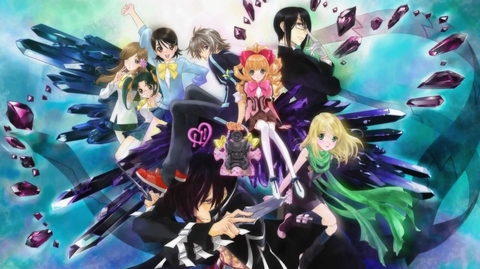
Rock and Troll
Seventeen years ago, several meteorites fell to Earth, carrying seven types of alien crystals. Dubbed Sacred Seven, the crystals possess the ability to mutate DNA. 17-year old Alma Tandoji happened to be one of the first humans affected by Sacred Seven. As such, he is socially distant and feared for his rumored violent behavior. He is contacted by Ruri Aiba, a rich teenage girl, CEO of the powerful Aiba Foundation, and commander of her own personal maid army.
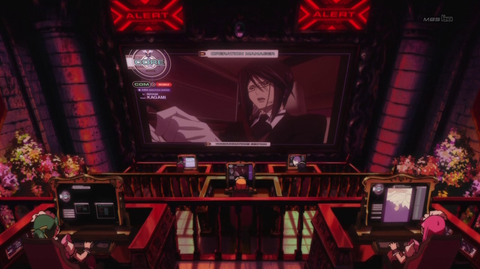
It's like Ghost in the Shell…but frillier.
She begs him to help her fight a mysterious enemy that very recently started causing massive havoc through the land. Her goal is to use her vast resources to acquire the power of Sacred Seven and use Alma to stop the oncoming darkness.
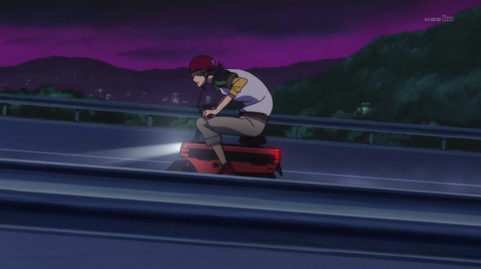
Although he might take a while…
We’ve all seen the writing on the wall: Bandai is dying. That doesn’t mean a lot to anyone not obsessed with Gundam, but Studio Sunrise will likely miss them, since they have enjoyed a profitable partnership for decades. That said, the studio has decided to head in a different direction recently: comedy. It might seem like an odd move, but after their work on Code Geass, the company writers know what looks good, what looks stupid, and what looks funny. Sacred Seven is decidedly an action story about the Good fighting the Not Good, and the animation style reflects it. The fight scenes are as polished as you could ever expect from Sunrise. The voice acting and music are par for an action series and therefore forgettable. This show should come off as your average B-Class tv show, and yet something stands out. What was it again? Oh yeah, everything else.
Sacred Seven throws almost every possible cliché known to modern anime in this series: maids, mecha, high school, rich girls, loner boys, annoying non-human mascots, over-exaggerated fights, and the list goes on and on.
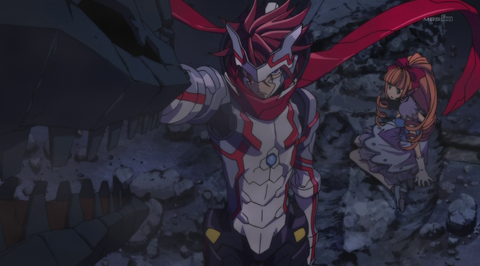
And don't forget Kikaider.
As for the mechanics of the “story,” those who fight with the crystals are called Dark Stones, and those who can control the crystals are called Light Stones. Already the story then starts falling apart, because the Sacred Seven basically acts like magic, bringing stone gargoyles to life, letting humans grow a metal suit of armor, turning a weaponized helicopter into a city-sized snowflake with centipede dragons, etc. As for the Light Stones, they don’t really serve much of a purpose except to further enable the fighting abilities of a Dark Stone.
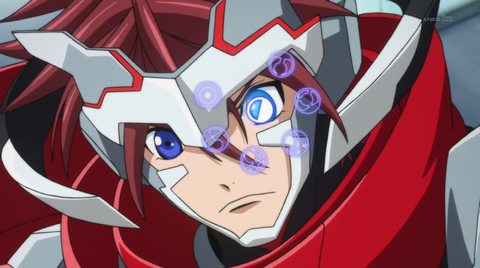
Just what I’ve always wanted, the power to Macro…
So about that comedy angle I was playing towards. Sunrise seems to understand quite well that this is a silly little action show, so the studio decided to have some fun with it. The clichés are often so mismatched that they shake you out of your boredom, if only to make your chuckle at their absurdity. It’s not like the clichés add anything meaningful to the series, but they also don’t take anything away. Although the Geology majors among us (all 0-1 of us) should be jumping all over this show, Sunrise at least tries to make the content bearable. However, just because Sunrise feels like devoting another chunk of its budget towards a series rooted in irony, that doesn’t mean viewer should (or could) like it. Sacred Seven is better left buried in the ground.
Chihayafuru
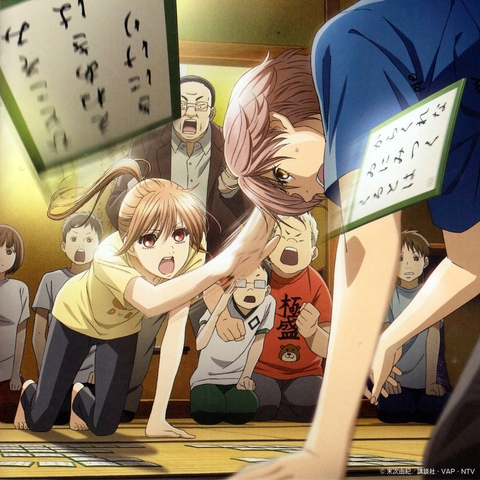
Children’s card game…motorbike not included.
Chihaya is a lighthearted tomboy, who’s not especially good at anything in particular. Although her dream has always been for her sister to become a great model, she meets a quiet boy named Arata Wataya, who tells her that a dream is something that should concern only herself – and something she has to work hard for as well. The boy is deeply enthralled in competitive karuta, a card game based on Japanese poetry. Chihaya’s quickly takes a liking to the game, and the two become close friends. They start playing as a group with Taichi Mashima, Chihaya’s smart and athletic childhood friend. They all become exceeding skilled at the game, but they have to part ways during their middle school years due to several circumstances. As their high school life begins, they meet once again.
Card games and anime have always had a very tepid relationship. Often the anime is based solely around the game, and the result (although sometimes fun) is usually obnoxious and silly. Chihayafuru decides to base itself upon the slice-of-life and propel itself using a card game. The result is a show driven by the characters and not card-based conflicts, and it’s actually rather good.
The show itself is deeply rooted in slice-of-life, but the content feels far more meaningful. The art style is consistently light, with soft colors and gentle gradients. The animation mixes simple backgrounds with beautiful character designs, with the scenery often matching the intensity of the moment. The music is soft, yet purposeful, properly reflecting the emotions of the characters. This show even adds detail to people’s clothing.

I watch this anime for the T-shirts.
The characters also break the archetype for card-game anime. The main protagonist, Chihaya, isn’t particularly godly at much of anything, but she does want to become better because Arata’s conviction inspires her. Likewise, she sees Taichi unhappy with his life (although he’s great at basically everything else), and so she works hard to tightly bind the group together. Things go fine for a while, but the forces that be (middle school, death in the family, the allure of having a life) have made the group drift apart.
Most of us (or at least those with an adolescence) experience many things in order to determine what we’re good at, what we’re bad at, what we enjoy, what we dislike, and ultimately what is important to us. Some things, no matter how silly in the grand scheme, bring us together with our life-long friends. However, at some point, we realize that much of what we have done will lead to a dead end. So we put aside childish things and move on to bigger better ventures. During that process, people change, and life tends to spread them apart. So then, how important is it to perform the same activities from those halcyon days? Are such activities the only interests that we have in common, or is there a deeper connection? If there is, then how far how should people be willing to go to keep those friendships held together? Chihaya tries very hard, because she realizes that she has no one else in her life to inspire her, and she knows that Arata and Taichi feel the same.
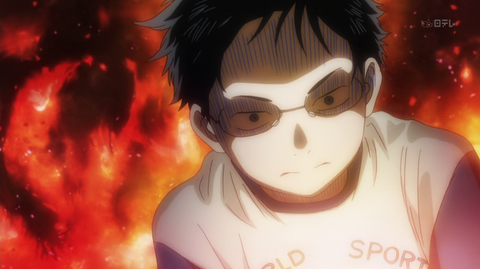
You can see the Daniel in his eyes.
From this perspective, the characters become more complex and dynamic in their attempts to hold onto the most important aspects of their pasts, and it’s fascinating to watch their internal and external struggles. Don’t be fooled by the premise of kids playing card games; Chihayafuru is easily one of the best written and executed slice-of-life anime in years (apart from Usagi Drop). Who knows, you might just remember something you had forgotten about yourself.
Kimi to Boku
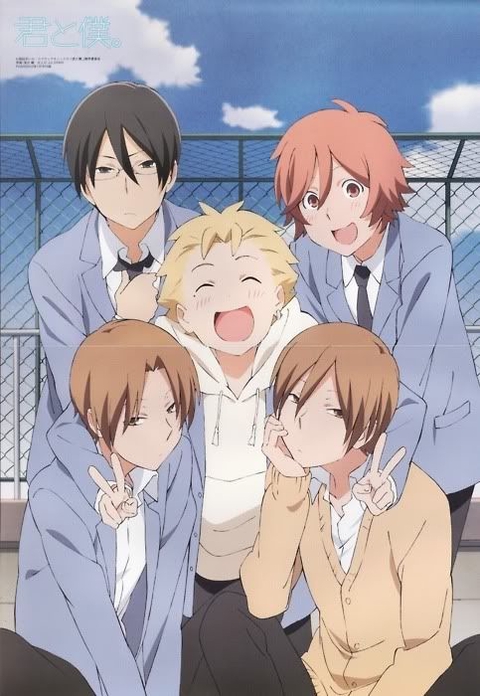
Bestest best friends forever….really.
Kimi to Boku chronicles the life and times of four lifelong male friends in high school. Studious Kaname, gentle Shun, and troublemaking twins Yuta and Yuki have been friends since kindergarten. Now, they all attend the same high school, and they’re as inseparable as ever. Despite whatever happens to them, they all remain good friends, including when a blond German boy named Chizuru decides to befriend them. Slice of Life ensues.
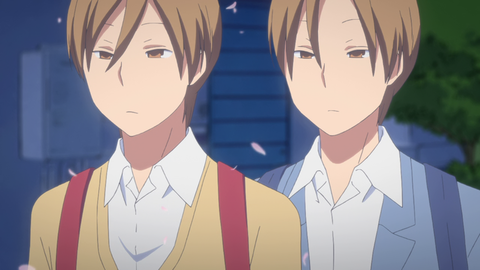
Are you not entertained?
It’s good to have close friends, the kind that you’ve grown up with, the kind that you confide in, the kind that are inseparable. Too bad such good friends make for poor television. Kimi no Boku is slice-of-life anime in concentrated extract form. The animation uses soft pastels with hardly any strict designs. The music is sparse and only casually follows the story. Even the voice acting is as casual as two friends shooting the breeze. That’s exactly what this show is: 25 minutes of friends basically shooting the breeze, and it is boredom incarnate. That’s not to say that Kimi no Boku’s characters aren’t interesting. The character interactions and the internal meaning behind many actions are quite profound, but they are incredibly subtle. In a way, it feels odd to pry into these characters’ lives because nothing is put on display. That said, I look like how this show makes you work to understand why these friends are so close, but the execution is far from engaging.
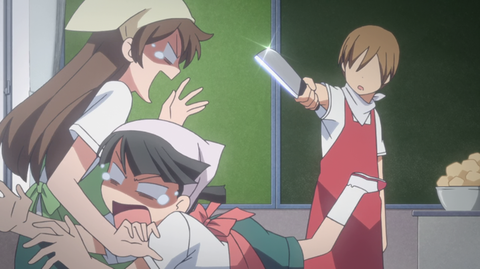
Just disturbing.
There’s also a psychological reason why Kimi to Boku feels different. While I’ve always been an advocate of quality over quantity, especially in this age of vapid “social media,” the closeness of everyone in Kimi to Boku feels almost unnatural. They almost never do or say anything to anyone else, and seeing that kind of small world from the outside is rather troubling. While it means that these characters will stick by one another, reality will eventually step in and drive them apart in at least some way. It’s not like they’ll all attend the same college, or work at the same job, or become neighbors. When people are so thoroughly attached to so few others, it’s unlikely that the story will end well. However, that makes it seem especially curious how these four people come to accept Chizuru after a relatively short amount of time. The only way the viewer can gains any deeper insight into their individual psyches is via each others’ reminiscing. All of this is accomplished with the most minimal of story, music, animation, and acting, and it’s very satisfying to know that simplistic stories can still be successfully conveyed. Kimi to Boku is, ironically, a show that you should watch alone (preferably with outdoor lighting) and devoid of all distractions, if only so you can concentrate on what the people say and do…like a good friend would.
Tune in next time as I review the final anime of Fall 2011. If you’ll excuse me, I believe I have a few awesome T-shirts to design.
Daniel · February 4, 2012 at 9:28 pm